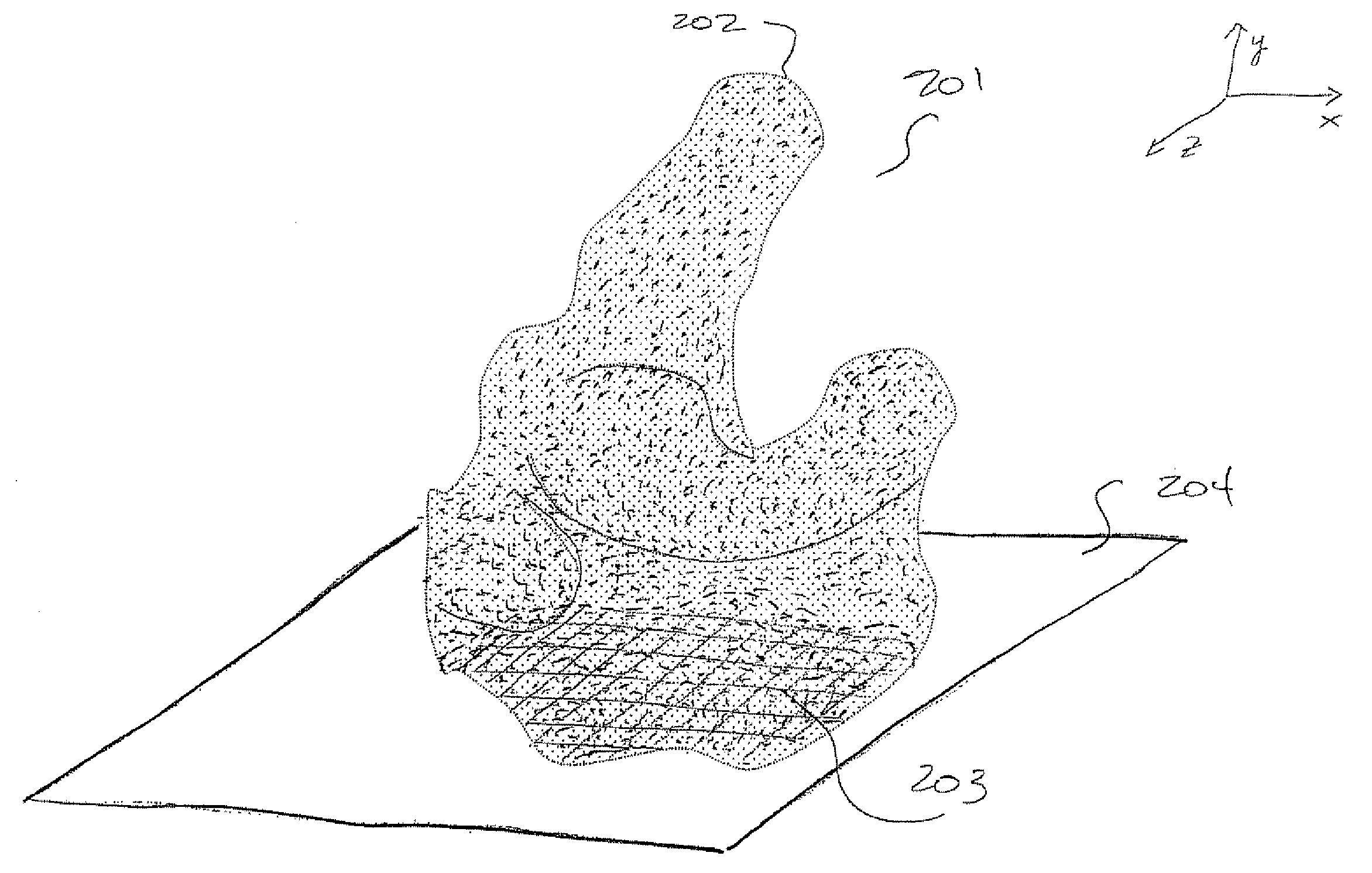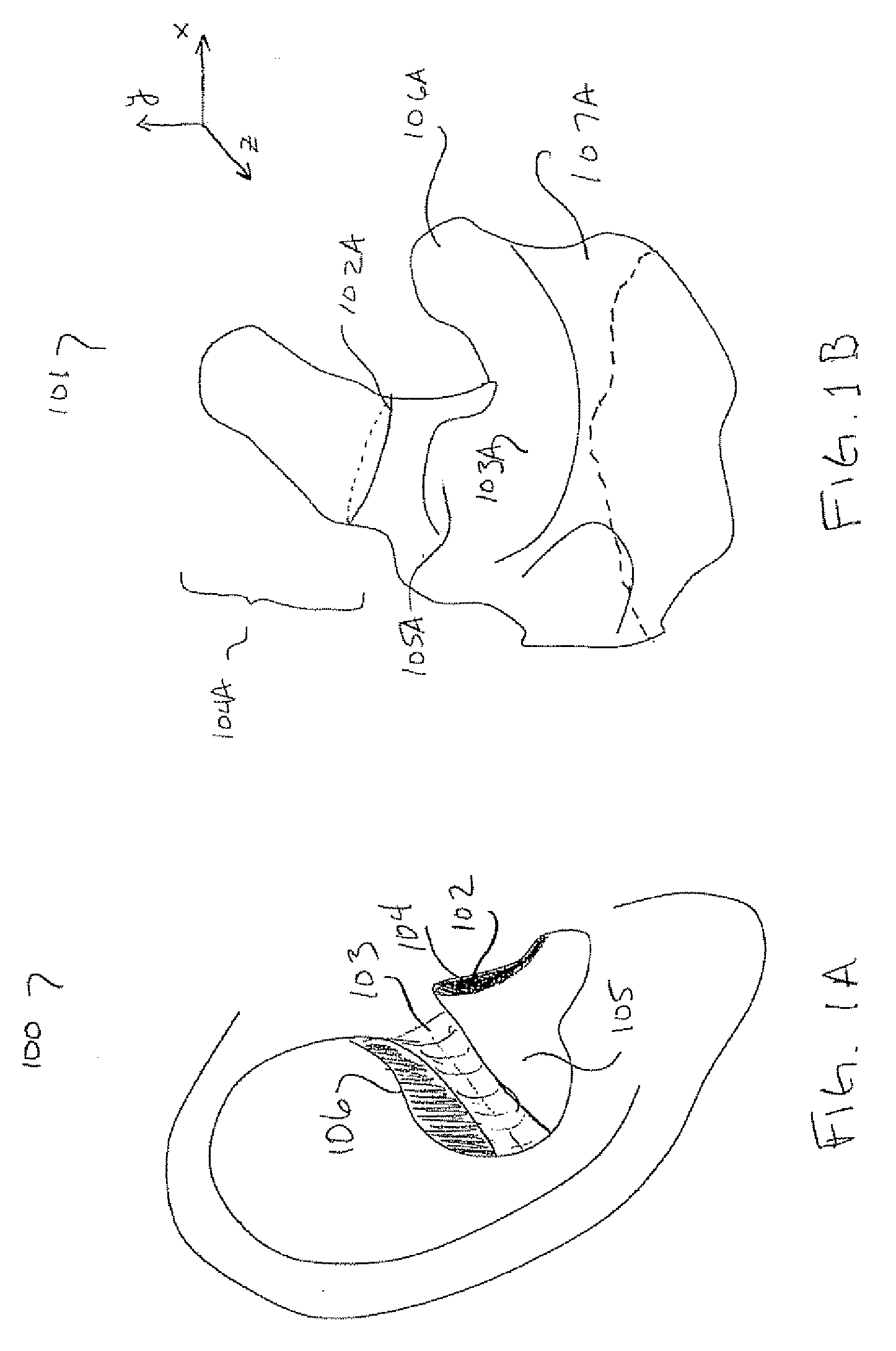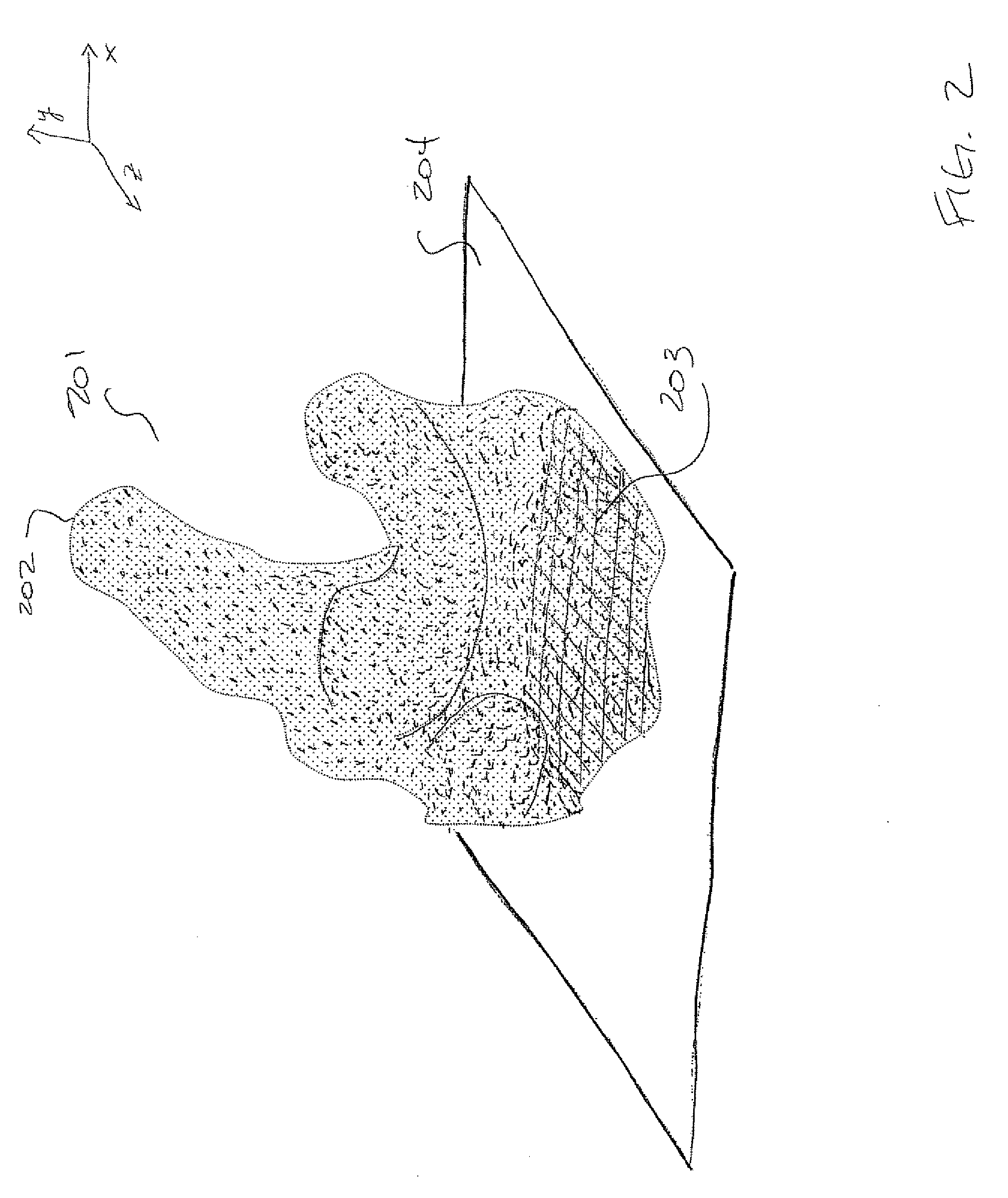Method and Apparatus for Ear Canal Surface Modeling Using Optical Coherence Tomography Imaging
a technology of optical coherence tomography and ear canal, applied in tomography, applications, catheters, etc., can solve the problems of affecting the patient's hearing, so as to avoid the cost of previous direct scanning techniques
- Summary
- Abstract
- Description
- Claims
- Application Information
AI Technical Summary
Benefits of technology
Problems solved by technology
Method used
Image
Examples
Embodiment Construction
[0020] As discussed above, the present inventors have recognized that using an ear impression mold to manufacture a hearing aid shell can be disadvantageous in some regards. In particular, as also discussed above, once an ear impression has been taken, it is subject to various external forces (e.g., temperature, humidity, etc) that may cause the impression to deform. Thus, any resulting hearing aid shell will not accurately reflect the true contours of the ear of which the impression was taken. Even when the ear impression is digitized (for example via laser scanning of the impression), inaccuracies in the ear impression may cause corresponding inaccuracies in a hearing aid shell. Therefore, the present inventors have recognized that it would be desirable to be able to directly measure the contours of an ear without manually taking a hearing aid impression of the ear. However, direct scanning of the human ear canal can be challenging due to, for example, the geometric complexity and...
PUM
 Login to View More
Login to View More Abstract
Description
Claims
Application Information
 Login to View More
Login to View More - R&D
- Intellectual Property
- Life Sciences
- Materials
- Tech Scout
- Unparalleled Data Quality
- Higher Quality Content
- 60% Fewer Hallucinations
Browse by: Latest US Patents, China's latest patents, Technical Efficacy Thesaurus, Application Domain, Technology Topic, Popular Technical Reports.
© 2025 PatSnap. All rights reserved.Legal|Privacy policy|Modern Slavery Act Transparency Statement|Sitemap|About US| Contact US: help@patsnap.com



